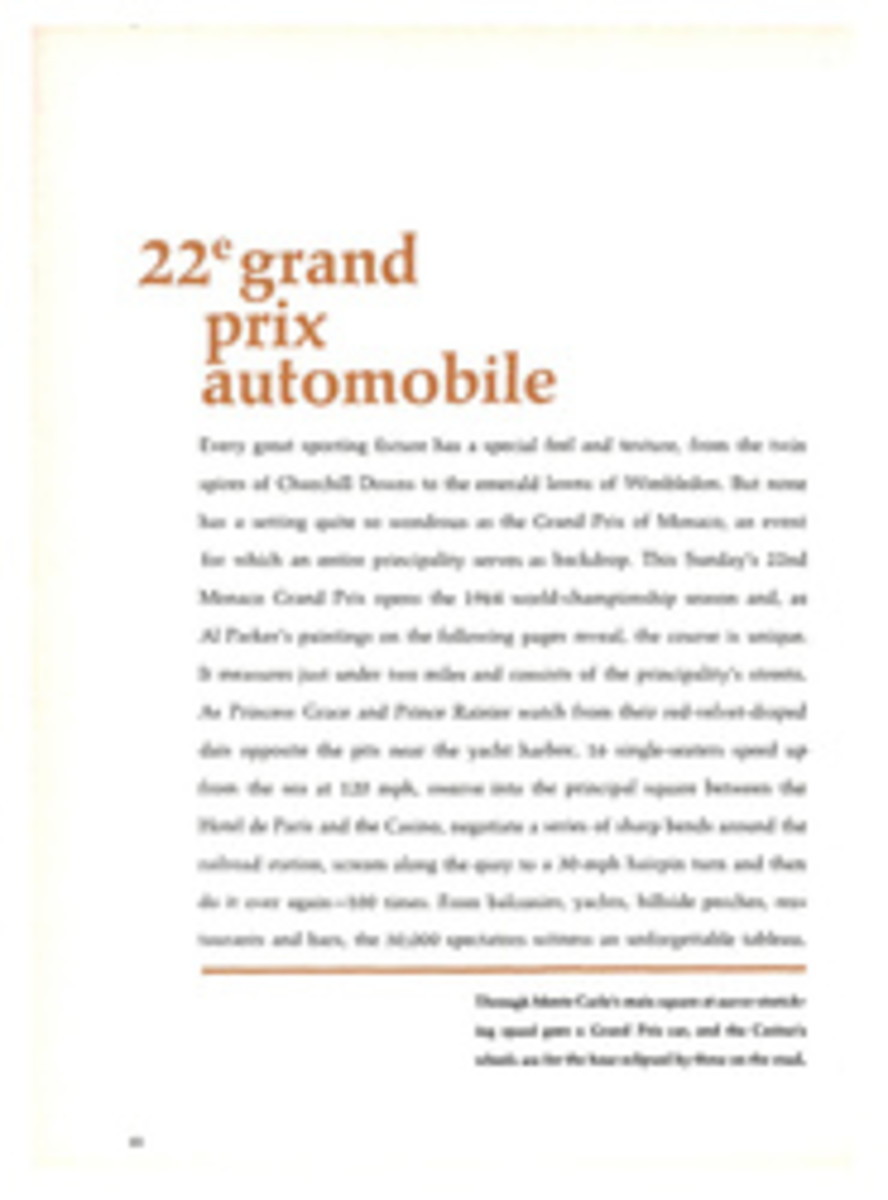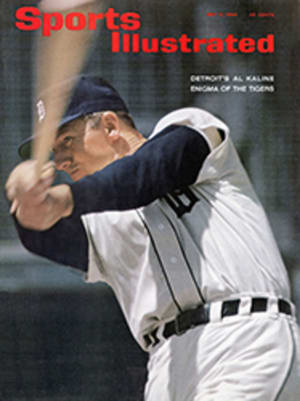
The sporty Honda 50 is changing the public's image of the motorcyclist
The Honda 50, a cross between a motorcycle and a scooter, is causing a small-scale revolution in the two-wheeled transportation field. The little machine is changing the public's image of motorcycling. Magazine advertisements for the 50 usually show people in stylish sports or evening clothes. Banished forever, at least for Honda, are those chrome-studded black leather jackets, a symbol of the roughneck cyclist made famous by Marlon Brando in the film, The Wild One.
The change in motorcycling began in 1959 when Honda, an energetic Japanese firm, introduced their lightweight, low-priced cycles in the U.S. They aimed their sales campaign at students, housewives and businessmen. The Hondas turned the two-wheeled world topsy-turvy with their success. Their radical design—incorporating the larger wheels of a motorcycle and a scooter-type seat, caught on first in California and then spread eastward. Honda sold 500 machines that first year, they sold 5,000 the next year, and last year they sold 100,000.
Honda is directing its appeal not to teenage toughs, but to people like Dr. Richard Thompson, a Washington, D.C. dentist and leading U.S. sportscar driver. Says Thompson: "It is an easy machine to handle in traffic once you realize that a cycle is virtually invisible to the automobile motorist. You must make allowances for him. This means defensive driving."
Its economy of operation and low purchase price make it ideal for students. Powered by an engine (5 hp, 50 cc.) scarcely larger than that of a deluxe power lawn-mower, the Honda can carry two persons at the unlawnmowerlike speed of 30-45 mph, using ordinary pump gasoline at the rate of only 150-200 miles per gallon. The Honda 50—with lights, horn, electric starter, turn signals and three-speed transmission—costs $275, plus a modest set-up charge. In contrast, most standard cycles cost at least $500, and even scooters start at $325.
Women, attracted by the idea of easy-to-handle supermarket transportation, are among Honda's best customers. The machine is light (with starter, it weighs about 155 pounds), and its scooter seat permits women to drive in tailored skirts. Most straddletype motorcycles weigh in at a hefty 500 pounds or so—a lot of weight for a girl to push around. Even the colors are appealing: a tomato-soup-red-and-cream combination, blue and white, black and white and plain cream. Honda's U.S. headquarters are at 100 West Alondra, Gardena, Calif.
If you are not satisfied with humming along on a 5 hp 50, Honda makes speedy competition machines as well. The company was the terror of the two-wheeled Grand Prix circuit in 1961 and 1962. According to New York Honda dealer Felix Navarro, "Most people, once they start on a smaller machine, eventually move up to more powerful cycles."
A few manufacturers, attracted by Honda's success, have introduced their own versions of a lightweight motorcycle in the American market. Yamaha and Suzuki, Honda's main Japanese rivals, are already selling their variations on a national scale. Harley-Davidson, the best-known U.S. manufacturer, plans to bring out a cycle roughly equivalent to the Honda 50 within a short time.
In 1959, about the same time as Honda's lightweight machines arrived in California, a rugged little two-wheeled cycle (for off-highway use only) called the Tote Gote began to replace old dobbin as a tireless mechanized packhorse for campers and hunters. The Tote Gote was not the first trail scooter, but it was the first dependable one to lug a hunter and his 250-pound deer carcass in and out of rugged, hitherto inaccessible terrain. Soon Tote Gotes were stampeding foot campers, packhorses and dudes all over the West. According to anti-Tote Goters, people using trail scooters were causing soil erosion and besides were a general nuisance in the woods. Tote Gotes and trail scooters (there are dozens of makes now) are banned from some parts of the National Parks and great tracts of the National Forest Service's wilderness areas.
Riding a trail scooter across a rocky, root-crossed trail or steep mountainside is almost like being on a bucking bronco. "It is something like riding a horse," says one owner. "It will not bite or kick, but it sure as hell will throw you. I had skinned knees and a sore back for weeks after I got mine."
Today the Bonham Corporation makes Tote Gotes in three, four and six hp models, costing $325, $350 and $395. Request for brochures should be addressed to the Bonham Corporation, P.O. Box 858, Provo, Utah.
The Triumph Corporation, the British manufacturer, makes an honest-to-goodness straddle-seated motorcycle—its Sports Cub—which can be used on the trail or on the highways. The Cub can drum out 16 hp with its 200 cc. engine at a flick of the throttle. In 1963, a competition Cub won its class championship in the 500-mile Jack Pine Enduro contest at Lansing, Mich., a grueling test of a motorcycle's ability to take rugged cross-country terrain. The cycle costs $675, and it is not for beginners. For sure-seated cyclists, Triumph makes larger, more powerful machines (500 cc., 650 cc). Write to Triumph Corporation, Baltimore, Md., 21204, for their catalog.

